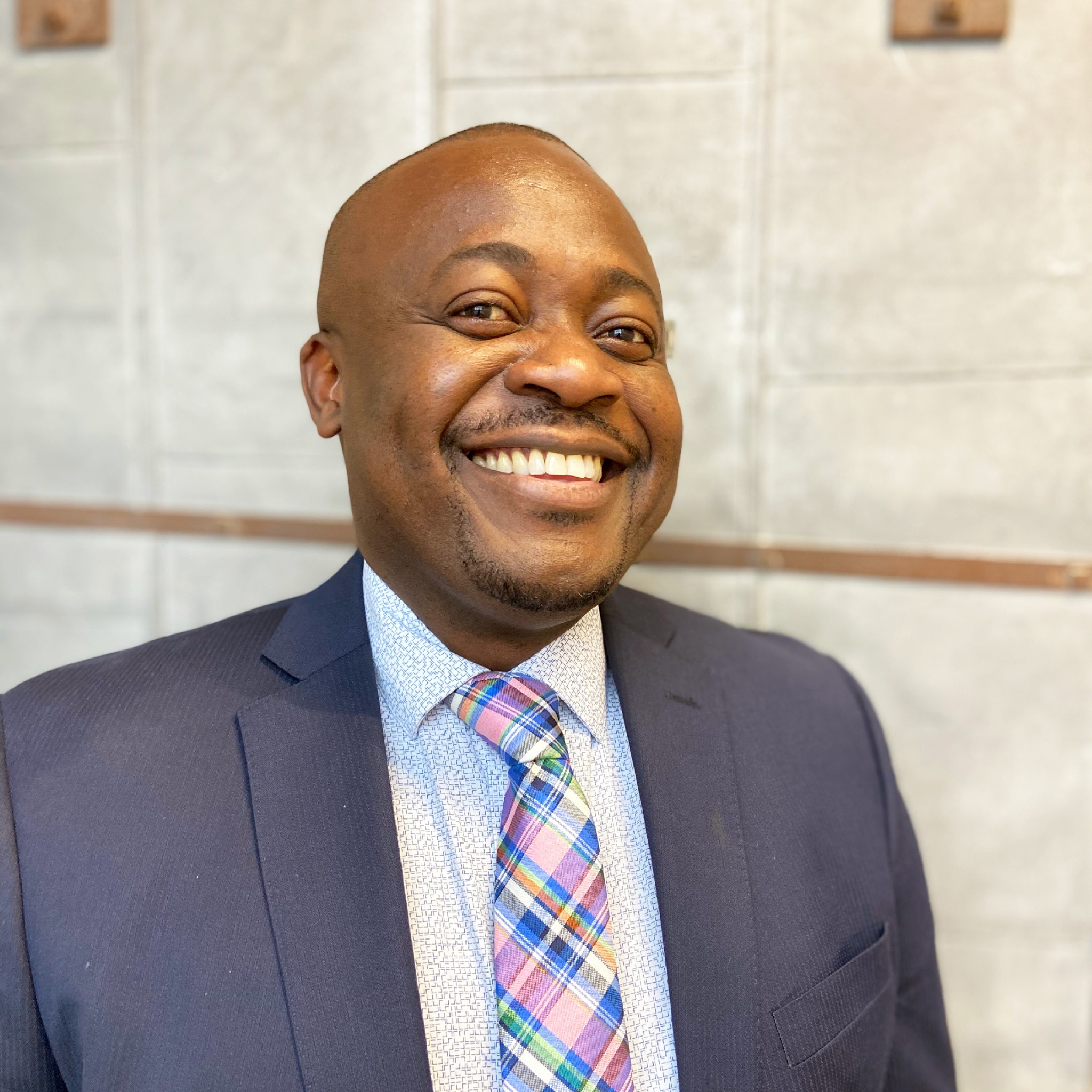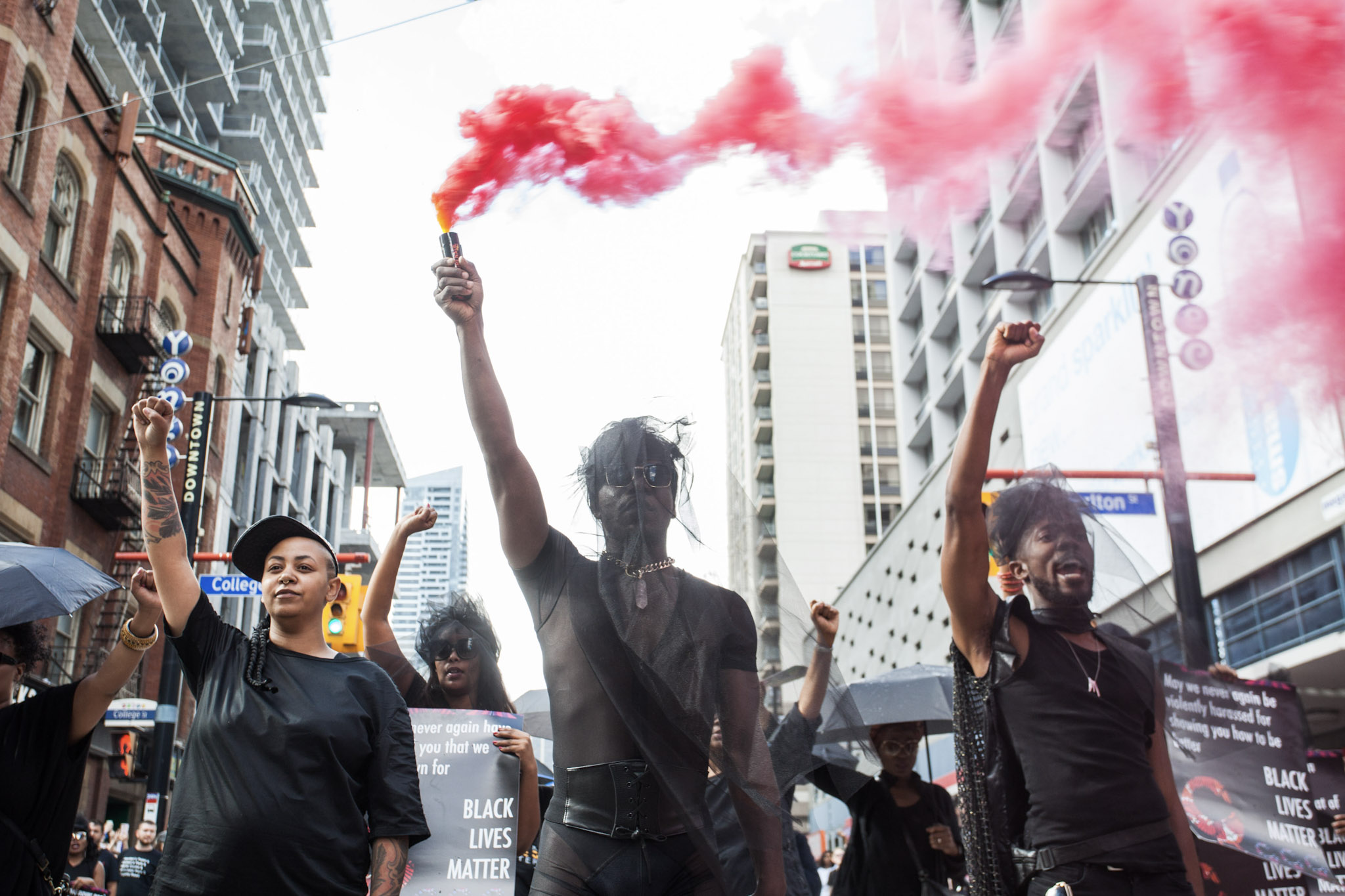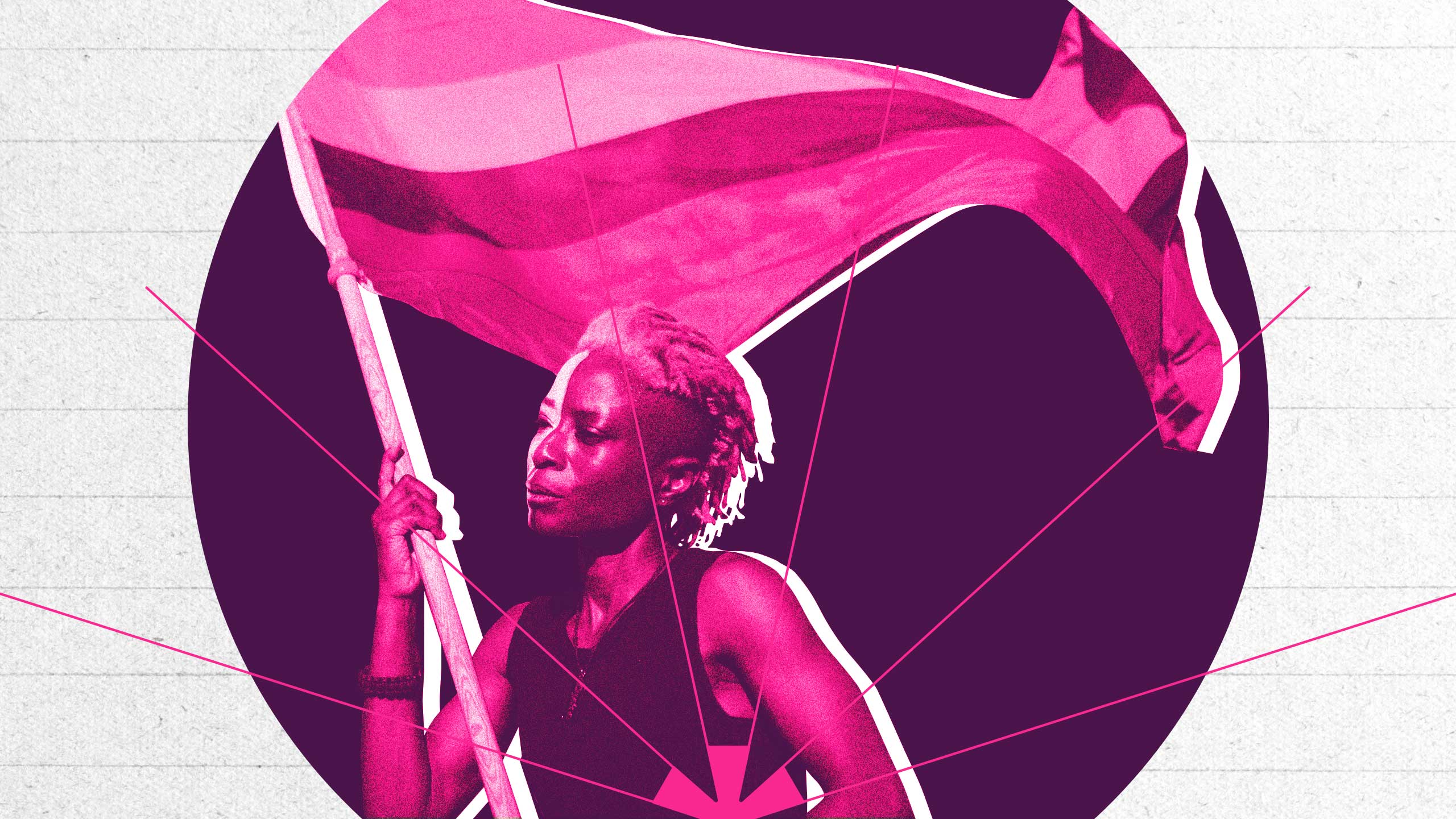Last year, Sherwin Modeste took over as executive director of Pride Toronto. To say it’s a tough job would be an understatement. For years, Canada’s largest Pride festival has been dogged by controversy—whether it’s banning uniformed police from marching in the parade or questions about pinkwashing and corporate handouts. In the past decade, the job has seen turnover after turnover. And that was all before the pandemic happened.
Now, Modeste is gearing up not only to shepherd one of the world’s biggest Pride festivals, but to do it with COVID-19 restrictions in place.
It’s a high-stress position few would feel willing to tackle. But Modeste views it differently: “I saw this as an opportunity to really bring a different plan to Toronto and really work with the community in order to do that,” he says. “Being a racialized individual and an immigrant for many years, that is one group that have not seen themselves represented at Pride. We also can talk about individual Indigenous and BIPOC members who, in general, just weren’t seen or represented in Pride in many areas.”
While this year’s event is online, Modeste says the focus remains on outreach to the community. “Folks are accustomed to coming to us, and this year our goal is to hit all of the right [areas] and to wish folks a happy Pride,” he says. “So folks can look out for us across the city of Toronto… and we will be there in some capacity.”
Aside from managing another pandemic festival, Pride Toronto, like Prides in other large cities across North America, is grappling with its future and what it wants to be moving forward. The pandemic alone has revealed several inequities, and put queer spaces like bars, shops and other havens at risk with ongoing lockdowns and high infection rates.
Prides have struggled with the role they play in LGBTQ2S+ communities and how they keep marginalized people safe. Earlier this year, NYC Pride banned uniformed police from marching, much to the chagrin of the New York Times editorial board. Vancouver barred the city’s public library and the University of British Columbia from participating in its Pride festival in 2019 after both institutions hosted anti-trans speakers. That same year, Edmonton outright cancelled its Pride celebrations after its board of directors felt they could not meet the demands and needs of LGBTQ2S+ people of colour and other marginalized members of the community.
Now, with the pandemic raging on, Prides of yesteryear remain on hold; parades, street festivals, talk panels and balls will largely be digital this year, as they were for 2020. That gives Pride festivals around the world a much-needed chance to catch their breath and re-evaluate: What exactly does a successful, inclusive Pride festival look like, anyway? The answer might be found looking back to Pride’s humble beginnings—and by looking forward with those historically overlooked.
Pride Toronto is no stranger to tough questions about who it serves and how. Though some activists participated in “Gay Day” picnics on Toronto Island in the early 1970s, the celebration we know today got its start in the shadow of Operation Soap in 1981, when Toronto Police raided city bathhouses after months of work to uncover “indecent acts.” By the end of those raids, more than 300 men were charged for being in or operating a bawdy house in what was long the largest mass arrest in Canadian history; many of those arrested were outed to friends, family and employers.
While that’s what most people know as a flashpoint for early protests against police brutality in the gay community, more raids came in June of that year, along with the “Battle of Church Street.”
“What exactly does a successful, inclusive Pride festival look like, anyway?”
“The queers took over Yonge Street and took over Yonge and Bloor…and they got up and started marching toward police headquarters,” says York University historian Tom Hooper. “And that’s where all hell broke loose: a police car drove into the protests and injured several people.” This protest, Hooper says, was instrumental to the creation of Toronto Pride 40 years ago.
“We were pissed,” says artist and activist Amy Gottlieb. “We were pissed about the bath raids. We were pissed that lesbians were having their children taken away. We were pissed that we couldn’t be open in, you know, our jobs. We were pissed because of a whole slew of different things.”
That activist spirit of protest was the driving energy behind many early Pride events—from San Francisco’s Compton Cafeteria and White Night riots in 1966 and 1979, respectively, to New York’s Stonewall uprising in 1969 to London, U.K.’s Festival of Light action in 1971.
In 1991, Pride Day was declared an official city event in Toronto for the first time. Beyond marches against police brutality, Pride also tackled legal rights for queer couples with a 1994 protest against the defeat of Bill 167, a proposal by the Bob Rae government to provide spousal rights for same-sex couples. In 1995, Barbara Hall was the first Toronto mayor to ever march in the city’s Pride parade.
In the ensuing years, the activist spirit and protests that fuelled early Prides continued—even when Pride Toronto became more corporate and mainstream. Through the 1990s and early 2000s, staple events such as the Dyke and Trans marches began, creating space for more marginalized communities. Blockarama, which is specific programming aimed at Black LGBTQ2S+ people, started in 1998. Though major banks began sponsoring Pride and more non-LGBTQ2S+ people became regular attendees, the issues facing queer folks in the city continued brewing—even to this day.
“The activist spirit and protests that fuelled early Prides continued—even when Pride Toronto became more corporate.”
Many of those tensions came to a head in 2016, when Black Lives Matter Toronto stopped the city’s annual Pride parade in a call to action for the rights of Black LGBTQ2S+ people and communities to be respected. One of their main demands was to remove uniformed police from marching in future parades or on floats—a response to ongoing police brutality against Black queers and LGBTQ2S+ people of colour in the community. In the end, Pride Toronto voted to keep uniformed police out of the annual festival. And that decision has left the organization facing a harsher spotlight than before; even today, some politicians refuse to march without police and have even threatened to withhold government funding.
It’s an issue emblematic of the core issues that Prides, in Toronto and abroad, continue to grapple with. How can celebrations born out of protest—particularly against police—reconcile relationships as festivals grow bigger and bigger? It’s a question other North American cities (most recently New York City) have begun asking, too.
There isn’t a straightforward answer. But regarding police presence at Pride, Modeste maintains respect for the decision to keep uniformed cops out of the festivities. He says that, eventually, he’d like to see that relationship mended.

Credit: Courtesy Pride Toronto
But in Toronto, the LGBTQ2S+ community’s relationship with police remains fraught even some 40 years since Operation Soap. Earlier this year, an independent review into the police service’s handling of missing persons cases found the Toronto Police Service held a distinctly anti-gay bias throughout its investigation into serial killer Bruce McArthur, who is responsible for the murders of eight Toronto men.
“I respect that [decision to keep police out of Pride] and will continue to honour that until such a time that the membership decides to go a different direction,” Modeste says. “That being said, yes, I welcome dialogue and conversation with the police because we have to work together. We look at and we look at harm reduction. We look at how we can work with the police to change the way that police treat to LGBTQ members of the community.”
While Modeste and his team at Pride Toronto work on that relationship, an internal discussion of corporate handouts to fund Pride has also cropped up. Criticisms against corporations have mounted each year, as merch becomes more cool and profitable without discernible, concrete action of these companies to making queer lives better. Among Pride Toronto’s biggest corporate sponsors: TD Bank, Google, Trojan, Deloitte and IKEA.
“We see working with our corporate sponsors as another avenue to addressing some of the concerns that folks have,” Modeste says, “whether it’s through the workplace, whether that is through housing, health care, corporate sponsors—we can use that avenue to also advocate for change. We’re not just asking for money. We’re also asking for change.”
Modeste also says Pride Toronto holds its corporate sponsors accountable, seeing an opportunity to educate those who give their money and products to Pride. “So yes, we welcome [them]. And I think it’s really an honour where you can have a protest, but yet celebrate the gains that we have made. I think the two merging together speaks volumes of Pride Toronto and the work that we will do and the work that we will continue to do.”
Of all the hurdles Modeste will have to address as Pride Toronto’s ED—from hosting a massive online festival during a pandemic to appeasing multiple intersections of the LGBTQ2S+ community—there is one in particular that remains the highest and perhaps trickiest to clear: addressing the violence, fear and anxieties that created Toronto’s first iterations of Pride in the first place.
“The founding principle of Pride has not been addressed,” Hooper says. “Police violence has not been addressed. We’ve had side victories…[but] these are peripheral victories in terms of what Pride was created to do.
“You can dance and you can party, but then you have to go back to the struggle.”
“You can dance and you can party, but then you have to go back to the struggle,” Hooper adds, arguing the celebration should be a moment to energize the community to accomplish greater things.
So how do Prides balance that now? In recent years, alternatives to the annual festival have emerged. In Toronto, the No Pride in Police Coalition has taken shape, physically gathering in 2020 despite the pandemic. Another example is in New York City, where the Reclaim Pride Coalition was created in response to what the organization calls “a symbol of gay for pay.”
But these alternative Prides sidestep the larger issue: Pride is, for so many, no longer a space representative of the marginalized people it was created for. If Pride isn’t inclusive of these members of our communities, who is it serving?

Credit: Nick Lachance/Xtra
Amy Gottlieb says she stepped back from Pride Toronto altogether last year because of her own dissatisfactions. Instead, she took over her block with other queer households.
“We had 50 people on our block come out,” she says, “and we danced and we played music at different places. We had constructed a little float. We had somebody who spoke as well and connected the struggles around queer liberation specifically to racial justice and abolition.”
Addressing liberation and racial justice is where Beverly Bain comes in. As the co-founder of the aforementioned No Pride in Policing Coalition, she argues the festival aspect has overtaken the critical issues.
“All of those connections and struggles, we understand that we are not separated from our community,” Bain said. “We are all in a larger community, right? Absolutely building a global map.”
“We understand that we are not separated from our community.”
Bain connects the struggles of the queer community to those, for example, of Palestinians and Indigenous peoples in Canada. She also says abandoning the festivity of Pride and refocusing on tangible political organizing can be a push for justice.
“But there is some real action [we can take] to change things, to create a new kind of model to save and protect and to address issues of opportunity,” she says.
Back in Toronto, Modeste says he’s not only working to get the best Pride festival to the city’s queer and trans communities, but to continue to reach people beyond Pride month.
“Many of our community members are facing the high rate of unemployment within our community. We’re looking forward to engaging in some dialogue once we’re able to start meeting in person,” he says.
“We’re definitely looking forward to not just the festival for 2022, but to how we can engage the community more in really addressing some of those real concerns that the pandemic has sort of put to the forefront in terms of housing, in terms of homelessness, education and all of those issues.”
As Prides all over the world carve a path out of the pandemic, let’s keep this tweet from Bob The Drag Queen in mind: “You are allowed to celebrate Pride however you want to. You can party, you can protest, you can watch a film, you can eat with loved ones, you can meditate. Celebrate YOUR Pride how YOU choose.”


 Why you can trust Xtra
Why you can trust Xtra


